Equipment recycling: Every sailor should use these green alternatives
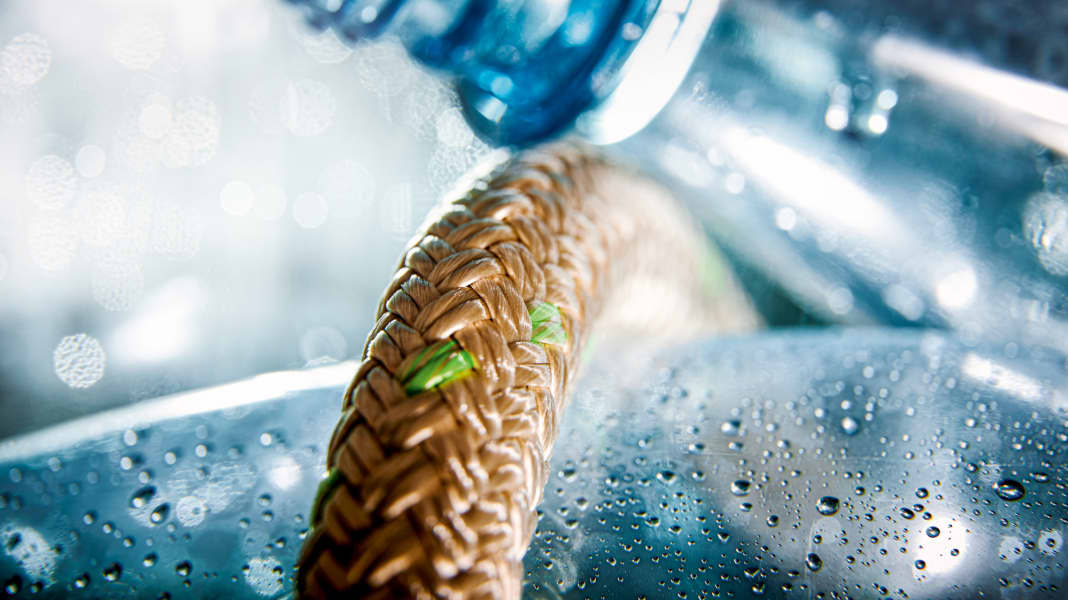
Mineral oil products are omnipresent in the manufacture of fittings, cordage and clothing. Either as a raw material, as an energy source in production or in packaging and delivery. This is neither climate nor environmentally friendly, but it also highlights the potential for reducing CO2 emissions. For example, by replacing materials with recycled materials, which works particularly well with aluminium or polyester and significantly improves the carbon footprint.
Another approach is to reduce the fossil content of products and use renewable sources instead. This is familiar from petrol stations as an admixture of biofuel. Unlike biodiesel, however, the renewable content does not have to have a negative impact on the product properties, as Bio-based Dyneema makes clear. Although some of the raw materials come from paper production waste, the fibre has exactly the same performance values and processing properties as the petroleum-based variant. The situation is similar with bio-epoxy. Although the resin has slightly different processing properties, it is technically on a par with the best standard products.
Switching production to renewable energies has another positive effect. Rope manufacturers are a good example of this. On sunny days, Liros can supply its braiding machines with CO2-neutral electricity from its own solar system and uses waste heat from a biogas power plant for heating. Gleistein has been supplying its main site in Bremen entirely with green electricity since 2014. Even with renewable raw materials such as wood, there is room for improvement, as the example of cork shows. As a decking material, the material is no longer a purely natural product. However, most of it still consists of the bark of cork oaks. As they are only peeled and not felled, the ecological balance is particularly good.
Sustainable flagship products from the equipment sector:
Bio-based Dyneema: from tree to rope
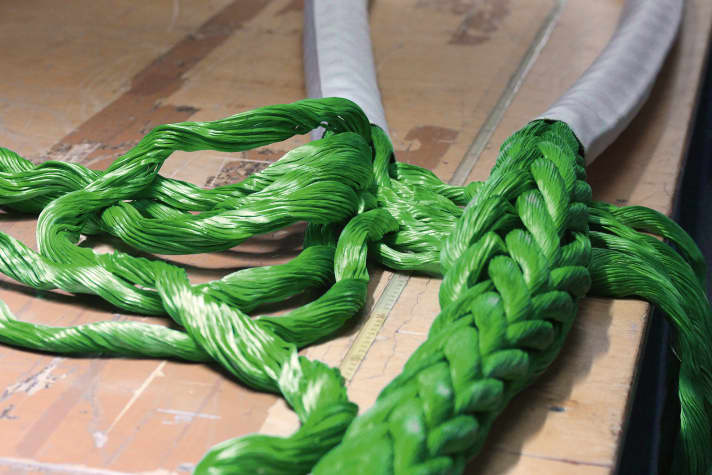
Around nine tonnes of carbon dioxide are released per tonne of Dyneema rope, which is almost 60 percent more than is produced by a polyester rope. In order to limit climate damage, many rope manufacturers are now using so-called bio-based Dyneema. The fibre is technically identical, but during production some of the otherwise petroleum-based raw materials are obtained from paper production waste. This reduces the carbon footprint of the finished cordage by a whopping 52 per cent.
rPET rope: out of the bottle

Ropes made from recycled PET bottles, known as rPET, are now available from almost all manufacturers. Mostly as mooring lines, but sometimes also as sheets. The material has almost the same properties as conventional polyester, but reduces CO2 emissions during rope production by around 57 per cent. Unlike with Bio-Dyneema, rPET requires adjustments in the braiding process, which is why not all core/sheath combinations are yet available with recycled polyester.
Magic Hatch hatch frame: reused

The hatch frames in the Magic Hatch series from French hardware manufacturer Goiot are made from recycled aluminium. The glass is also made from recycled material. The PMMA for this is supplied by Greencast, one of the few producers of recycled acrylic glass. The special feature: During the recycling process, the material is broken down into its basic components and can be renewed as often as required without losing its optical properties.
Allen blocks: from our own production

The production of plastic parts inevitably generates waste that is often only reused thermally - in other words, it is incinerated. Manufacturer Allen uses the plastic waste from its own production to manufacture the discs for the plain bearing blocks. As the waste is pure plastic, the technical data of the recycled blocks is on a par with the previous models made from virgin material.
Polyform Green Concept: Fender against microplastics
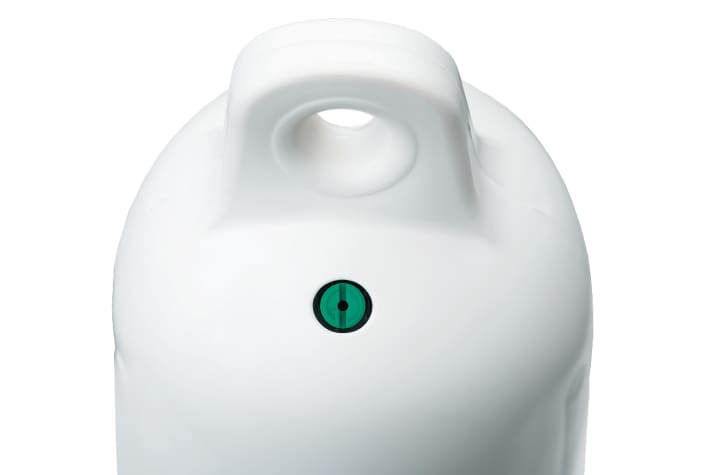
Polyform calls its fenders made from recycled vinyl Green Concept. Although only a third of the material is made from recycled plastic, it does not contain any phthalate-based plasticisers. Another special feature is the surface, which is said to be exceptionally abrasion and UV-resistant in order to release as little microplastic as possible into the sea.
Epoxy bio-resins (Entropy, Greenpoxy ...): partly plant-based
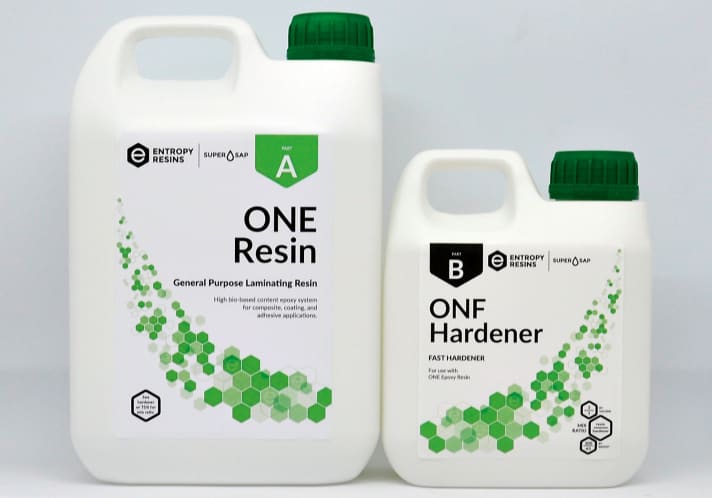
The basic idea behind epoxy systems such as Entropy or Greenpoxy is that the carbon components are obtained from biomass instead of crude oil, for example from linseed or waste products from biofuel production. Currently, around 30 to 40 per cent of the resin-hardener system can be produced without fossil raw materials. The bio-resins are technically just as efficient as the best standard products. However, the prices are around 15 per cent higher.
Teak substitute: peeled, not felled
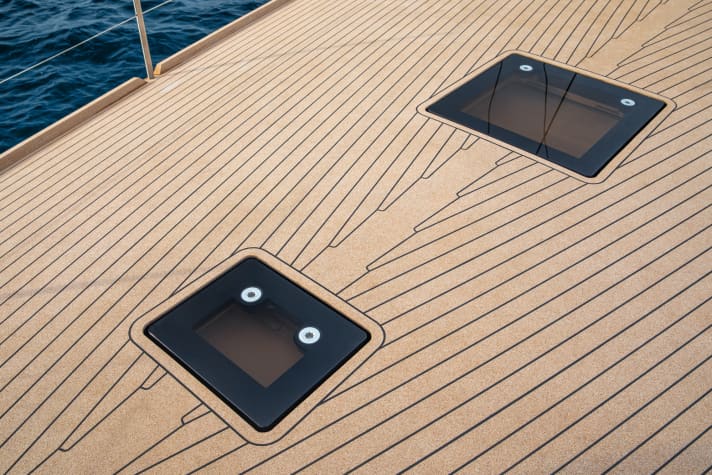
The tree is not felled to produce cork, but its bark is peeled every nine years or so. In purely mathematical terms, this even gives the deck a negative CO2 balance. However, the finished decking is a composite of cork granulate and synthetic rubber. The properties of the products are almost ideal as a deck covering.
Further topics in the sustainability special:
- 25 tips to help you sail more environmentally friendly
- These projects are available for marine conservation
- Sailing yacht vs. motorboat: which model is more sustainable?
- Boatbuilding ecolution: These shipyards are working on sustainable concepts
- Shipyard portrait Greenboats: Boats made of flax and components for Boris Herrmann
- Sustainable fashion: oilskins and other functional clothing - the best products
- Boat recycling: the never-ending story of GRP
- Sail recycling: not just stylish bags - what happens to old cloth
- "Losing is not an option" - Boris Herrmann on sustainability in motorsport
- Sustainable management: Wooden boats in charter operations
- Drinking water on board: you can filter water correctly using these methods
- Baltic Sea: How does a harbour become sustainable?
- Research yachts: Climate protectors under sail
- Pallets, bottles, flip-flops: creative recycling ideas in boatbuilding
- Monsoon 31: Greenfit instead of refit, what does that mean for the 50-year-old Hallberg-Rassy?
- "Nomade des Mers": a catamaran as a low-tech laboratory
- Self-build yacht "Ya": Totally self-sufficient on a trip around the world
- Sustainable boat project: 55-foot catamaran made from recycled aluminium
- The Schwörer family and the "Pachamama": On a long voyage for climate protection
- Nike Steiger on her recycling project

